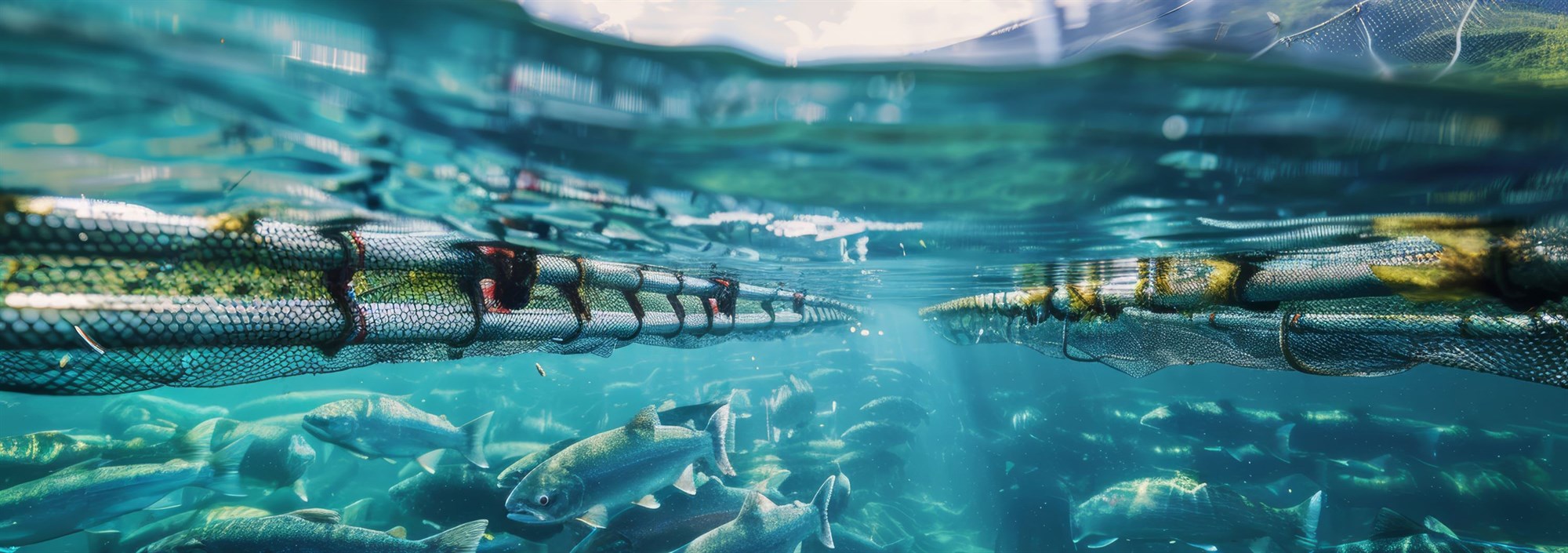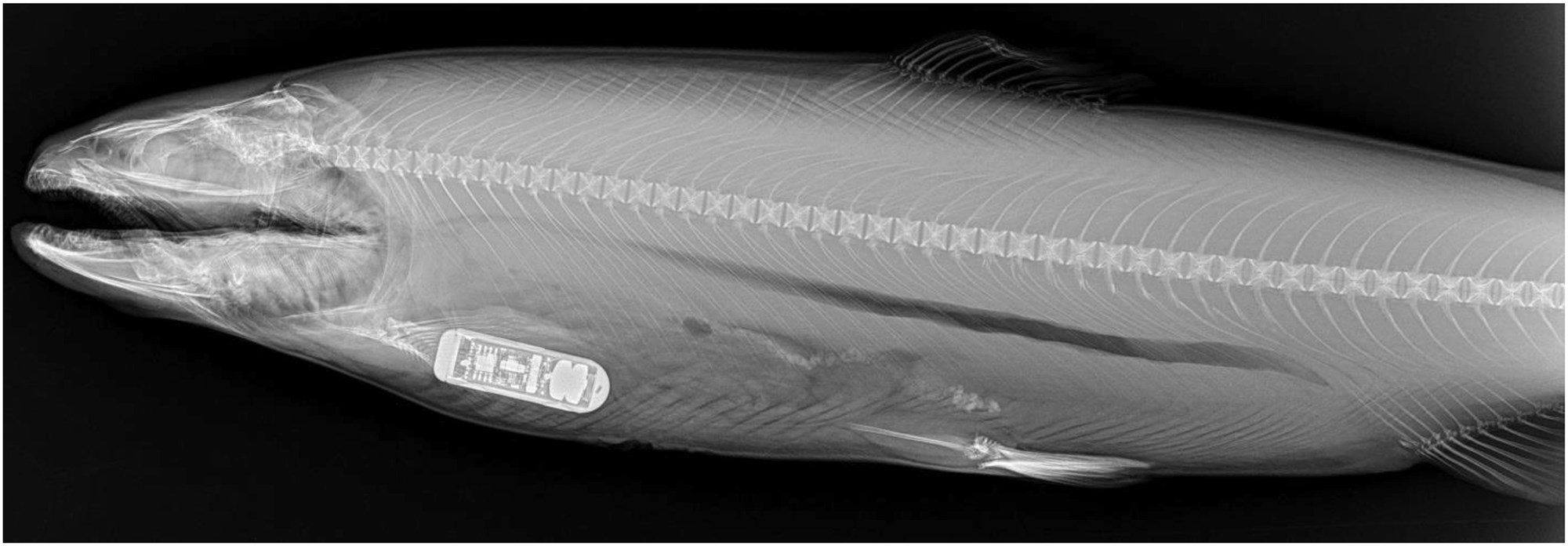Case studies

Improve Welfare and Reduce Mortality in Aquaculture
Take a look at Star-Oddi’s simple, flexible and accessible physio-loggers. Easy to use, flexible programming options, and accessible data.
Watch our video or webinar!
Contact us
 |
Explore Cage Distribution by measuring Temperature and Depth
Obtain a detailed behavioural profile by identifying cage distribution with no disturbance to the study animal. A fixed measurement interval or multiple measurement intervals can be set, as short as every second to several minutes or even hours. The loggers are optimal for both short-term and long-term studies. The long battery life of the loggers facilitates long term studies, up to 4 years with the largest logger type.
Look at the effect of Crowding Events by measuring Heart rate and Temperature
These loggers are ideal for long- or short-term studies looking at heart rate dynamics; studying behaviour, energetics, stress response or environmental challenges. They are suitable for measuring most fish species, where it is possible to record extended ECG records for periods where slow heart rates (<20bpm) are expected.
Inspect Swimming Performance by measuring Activity and Temperature
Get an overview of changes in activity over time by measuring acceleration derived activity in three dimensions, in addition to temperature. Statistical parameters provide estimation of swimming speed and non-steady swimming in addition to raw data. You have an opportunity to quantify swimming behaviour, and is ideal for a variety of studies in swim tunnels, tanks or sea cages, looking at behaviour, swimming, stress response or other swimming physiology.
Use the data as a Welfare Indication Tool by measuring Heart Rate, Activity and Temperature
This is possible through identification of correlation between heart rate, activity, and temperature. You can determine these parameters as proxies for stress in fish and help identify farming practices that can improve welfare. The measurements can give an overview of physiological response over time by measuring physiological response to environmental variations, including high and low temperature and hypoxia.
Contact us
Case study
Star-Oddis physio-loggers make it possible to use Heart rate, Activity, Temperature and Depth as Welfare Indicators in Aquaculture
Several recent papers explore the use of Star-Oddi’s leadless heart rate and activity loggers in Atlantic Salmon (Salmo salar), an important and valuable fish for aquaculture.
The papers highlight various practical aspects of measuring heart rate and activity in fish, including anaesthetics, surgical approach, and recovery, as well as discussing how heart rate and activity measurements can provide information on diurnal rhythms, routine behaviours, stress levels and subsequent recovery trajectories. This information can be used as a continuous welfare indicator during aquaculture practices.
Cage distribution mapped during heat wave
Real sea-cage examples include Gamperl et al. that measured Atlantic Salmon (Salmo salar) Cage-Site Distribution, Behavior, and Physiology During a Newfoundland Heat Wave [1] with DST milli- HRT ACT and Warren-Myers F et al. that measured Heart Rates Across Season and During Crowding Events [2] in Atlantic salmon for over 5 months.
Swimming performance unaffected by bio-loggers
Hvas et al. published a paper in the journal Fish Biology exploring Heart Rates of Atlantic Salmon during a critical swim speed test and subsequent recovery [3]. Star-Oddi’s DST milli-HRT heart rate and temperature loggers were implanted in Atlantic salmon post smolt at 12ºC. The difference between tagged and untagged fish was not found to be statistically significant during a swim trial, suggesting that the bio-logger did not affect swimming performance.
Before the swim speed test, heart rate peaked at 65 bpm during the day and nearly 40 bpm during the night. During the test, heart rate was raised approximately exponentially with swimming speed until a plateau was reached at the final speed prior to fatigue with a maximum of 85.2 +-0.7 bpm.
Cage distribution and wellfare indicators explored and validated
Zrini et al. corroborated Hvas et al’s swim results in a paper titled Validating Star-Oddi heart rate and acceleration data storage tags for use in Atlantic salmon (Salmo salar) [4]. Here, activity parameters were measured in addition to heart rate and temperature during a critical swim speed test using Star-Oddi’s DST centi-HRT ACT loggers.
In addition to the swim speed test, they presented various other results, including details on tagging, results on a 6-week study in a 2.4kg salmon, double tagging fish with temperature and depth tags, DST milli-TD, in addition to the DST centi-HRT-ACT loggers, quality assessment of the recordings and heart rate variability (HRV) measurements based on stored ECG data.
A valuable welfare indication tool
A third paper on this topic, published by Hvas et al. in 2020, evaluated Heart rate bio-loggers as welfare indicators in Atlantic salmon (Salmo salar) aquaculture [5]. Apart from details on the surgical approach and recovery, including an x-ray photo of the implant (DST milli-HRT) in a 1.2kg Atlantic salmon shown below, the authors conducted a 13-week trial studying the growth of the fish, as well as crowding stress trials at week 11, 12 and 13. Their results highlight the potential of bio-loggers as a welfare assessment tool in aquaculture.

Heart rate and activity as proxies for stress in fish
Finally, Svendsen and Före et al. published two papers from an experiment where they use Star-Oddi’s DST milli-HRT, DST centi-HRT and DST centi-HRT ACT loggers to evaluate Heart rate and swimming activity as stress indicators for Atlantic salmon (Salmo salar) [6] and Heart rate and swimming activity as indicators of post surgical recovery time of Atlantic salmon (Salmo salar) [7] in 55cm salmon kept at 4.2°C.
In addition to details on surgical approach and recovery the study included bloodwork and a stress experiment with lowering water level and chasing of the fish. Their results indicated that heart rate and activity can be used as proxies for fish stress.
Articles:
[1]Gamperl AK, Zrini ZA, Sandrelli RM. Atlantic Salmon (Salmo salar) Cage-Site Distribution, Behavior, and Physiology During a Newfoundland Heat Wave. Frontiers in Physiology Vol. 12 (1269)
[2]Warren-Myers F, Hvas M, Vågseth T, Dempster T and Oppedal F. Sentinels in Salmon Aquaculture: Heart Rates Across Seasons and During Crowding Events. Front. Physiol. (2021) 12:755659.
[3] Hvas M, Folkedal O, Oppedal F. Heart rates of Atlantic salmon (Salmo salar) during a critical swim speed test and subsequent recovery. Journal of Fish Biology, (2021), Vol. 98(1).
[4] Zrini Z, Gamperl K. Validating Star-Oddi heart rate and acceleration data storage tags for use in Atlantic salmon (Salmo salar). Animal Biotelemetry, (2021), vol 9.
[5] Hvas M, Folkedal O, Oppedal F. Heart rate bio-loggers as welfare indicators in Atlantic salmon (Salmo salar) aquaculture. Aquaculture Vol 529, 2020.
[6] Före M, Svendsen E, Ökland F, Gräns A, Alfredsen JA, Finstad B, Hedger RD, Uglem I. Heart rate and swimming activity as indicators of post-surgical recovery time of Atlantic salmon (Salmo salar). Animal Biotelemetry, (2021), Vol 9.
[7] Svendsen E, Före M, Ökland F, Gräns A, Hedger RD, Alfredsen JA, Uglem I, Rosten CM, Frank K, Erikson U, Finstad B. Heart rate and swimming activity as stress indicators for Atlantic salmon (Salmo salar). Aquaculture, (2021), Vol. 531.
For more publication information regarding star-oddi data loggers see our publication section:
https://www.star-oddi.com/scientific-publications/



